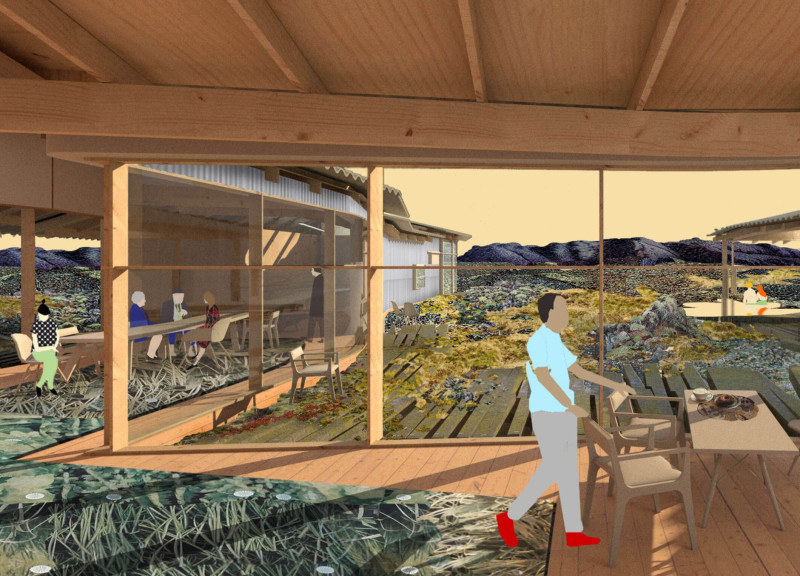5 key facts about this project
At its core, the project represents a commitment to sustainability and innovation, showcasing how modern architecture can coexist with ecological principles. The design integrates various elements that promote energy efficiency and environmental responsibility. For instance, the strategic placement of windows facilitates natural ventilation and maximizes daylight, reducing the reliance on artificial lighting and climate control. The use of green roofing systems not only enhances the building's aesthetic appeal but also contributes to biodiversity and manages stormwater effectively.
Functionally, the project accommodates a range of activities, effectively serving as a communal hub that fosters interaction and collaboration. Key areas within the design include versatile meeting spaces, quiet zones for individual reflection, and open areas that encourage social engagement. Thoughtfully planned circulation routes facilitate accessibility and allow for smooth flow throughout the building, ensuring that users can easily navigate the various spaces while feeling a sense of connection to both the interior and exterior environments.
The unique design approaches taken in this project lie in its clever utilization of materials and innovative structural solutions. A combination of concrete, glass, wood, and steel has been employed to create a balance between durability and warmth. Concrete serves as the backbone of the structure, providing strength and stability, while expansive glass façades invite the outside in, creating a dialogue between interior spaces and the natural landscape. Wood elements strategically placed throughout the interiors add texture and warmth, enhancing the user experience.
Furthermore, the design incorporates local materials and construction techniques, linking the project to its geographical context. This thoughtful selection ensures that the building blends seamlessly with its surroundings while also supporting local economies and reducing transportation emissions associated with material procurement. Details such as custom brickwork and local stone not only contribute to the project's visual identity but also reflect the cultural heritage of the area.
Another noteworthy aspect of the project is its emphasis on user-centered design. The architect has prioritized flexibility in the layout, allowing spaces to be adapted for various uses over time. This responsive approach helps future-proof the building, ensuring it remains functional and relevant as the needs of the community evolve. Elements such as movable partitions and multifunctional furniture create dynamic environments that encourage innovative uses of space.
The incorporation of sustainable technologies, including solar panels and rainwater harvesting systems, further enhances the building's commitment to environmental stewardship. These features are not merely functional; they are also educational, raising awareness among users about the importance of sustainability in architecture. The project thus stands as an example of how modern design can promote ecological literacy and inspire future generations to adopt environmentally conscious practices.
In considering the project's overall impact, it is clear that architecture plays a pivotal role in shaping the community's identity and experience. This building not only meets the immediate needs of its users but also serves as a catalyst for social interaction and community building. Through its thoughtful design and attention to detail, the project exemplifies how architecture can create meaningful spaces that resonate with individuals and foster a stronger sense of place.
For those interested in a deeper exploration of this architectural design project, reviewing the architectural plans, sections, and designs will offer valuable insights into the various elements that contribute to its success. Engaging with the architectural ideas behind this project provides a rich understanding of contemporary design practices and their potential to positively influence our built environment.


























